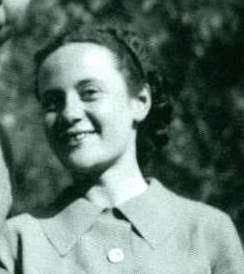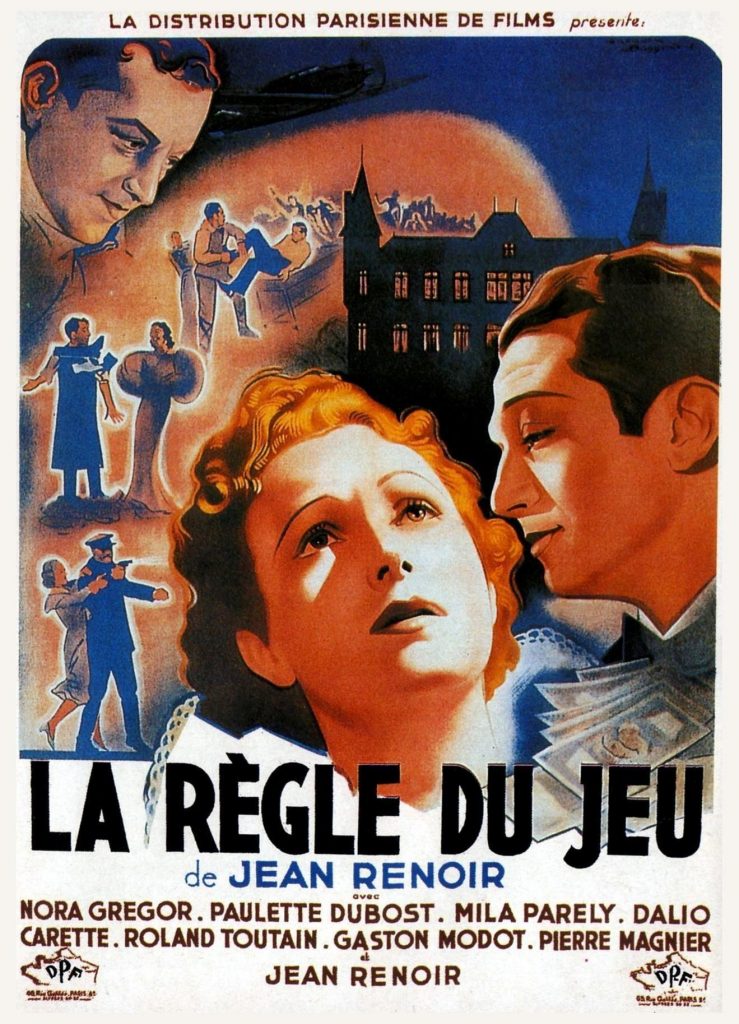Marguerite Renoir
1906 – 1987

In 1921, at age fifteen, Marguerite Renoir (née Houllé) began as an apprentice colorist at Pathé Studios. She has seventy editing credits from 1929-1972, notably for numerous films by Jean Renoir including Boudu Saved From Drowning, Rules of the Game (co-edited with Marthe Huguet), A Day in the Country, La Bête Humaine, and Grand Illusion. Renoir also edited several films for Jacques Becker, including Casque d’or, and one for Luis Buñuel. She also worked with Agnès Guillemot on the editing of Godard’s Masculin féminin. She and Renoir never married, but she adopted his last name; sometimes her film credits read Marguerite Houllé-Renoir.
“Renoir was fortunate to have Marguerite as his editor; what she did in his absence with A Day in the Country attests to how much he owed her in his other films of the thirties. His predilection for long takes and the avoidance of the conventional shot breakdown have led commentators to neglect the editing of his film. This is a mistake. His style called for a different kind of editing that required special skill. Marguerite had that skill. It is time that her talent and accomplishment be recognized.”
—Gilberto Perez quoted in “Marguerite Renoir: More Than He Deserved?” from “Fine Cuts: Interviews on the Practice of European Film Editing” by Roger Crittenden. The full text can be found in the appendix.
 Jean Fléchet: How did the three of you come to work in film?
Jean Fléchet: How did the three of you come to work in film?
Marguerite Renoir: By chance, as far as I’m concerned, or rather, due to my bad disposition.
I worked at Pathé as a colorist trainee. At the time, we were doing color films by applying garishly colored dyes straight onto the negatives. One day I was coloring a Passion of Christ when a storm broke out, and the resulting humidity made my dyes bleed on my film-strip. My department head came along and gave me a nasty talking-to. “Ma’am,” I answered, “instead of yelling at me, you’d better explain why the storm made the colors run.” This act of impertinence was not well received, and I was fired on the spot. I went to speak with the director. He agreed that I was innocent but did not want to contradict my department head, so I was transferred to editing. That was in 1921.
**************
Jean Fléchet: Actually, isn’t the role of the chief editor in the making of a film a bit like that of a mother?
MR: Yes, I am convinced that out of all the technicians that work on a film, the editor has the greatest attachment to the film – indeed, a physical, an emotional attachment.
Suzanne de Troye: Pagnol used to always say to me on the day of the film’s premiere, “So Suzanne, we’re giving birth…” It was just as painful, in fact.
MR: We spend such a long time on the film – four or five months, sometimes more – that we get really attached to it, and then when is everything is done and you have to put away all the bits of film that, as we say “ended up on the cutting room floor,” one by one, it’s often emotionally painful.
S de T: The editor is the one who stays the longest with the film – that’s very important.
MR: We have the most intense contact with the film – not that we get anything out of it.
—Two extracts from “L’Actualite du Montage: Trois chefs-monteuses, Margeurite Renoir, Suzanne de Troye et Marinette Cadix nous entretiennent de leur métier” by Jean Fléchet. The full interview (in English) can be found in the appendix.

